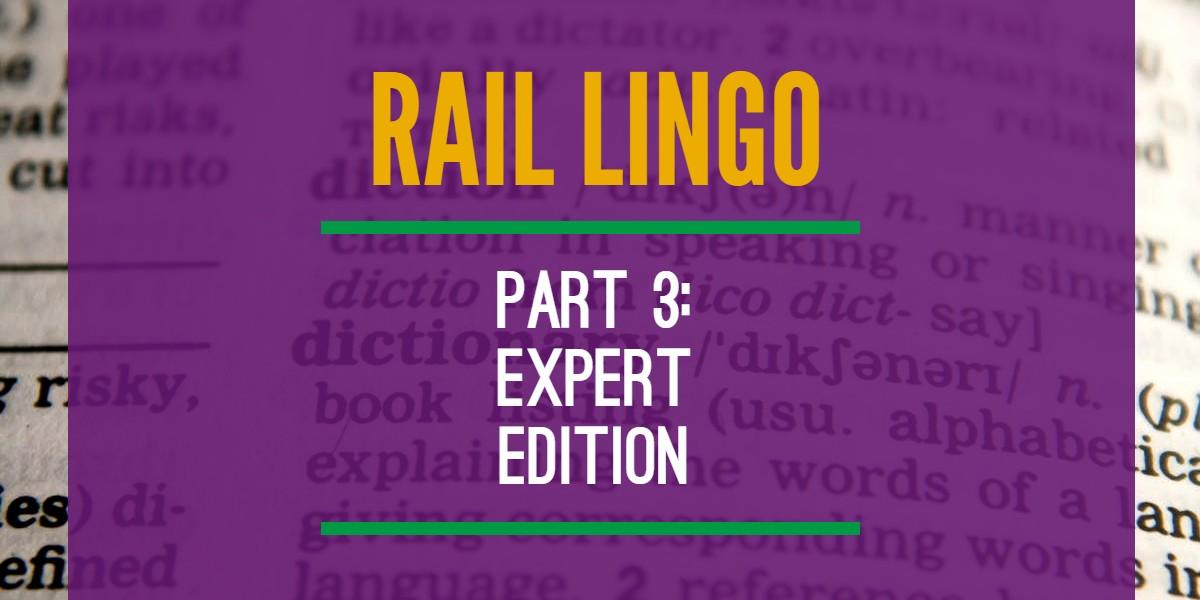Do you speak “railroad” fluently? If the difference between, “interchange,” “interline” and “intermodal” is soooooo obvious, you probably do.
If not, this list of expert railroad terms will take you to the next level.
Need to go back to the basics? Check out these beginner and intermediate words.
Degree of Difficulty: Expert
| The Word | Its “Official” Definition | What That Really Means |
|---|---|---|
| Demurrage | A charge made on cars or other equipment held by or for consignor or consignee for loading or unloading, for forwarding directions or for any other purpose. | The fee a railroad charges customers for the extended use of a freight car. |
| Interline | Between two or more transportation lines. | When your shipment travels on tracks that belong to two different railroads. |
| Interchange | Transfer of freight from one carrier to another. | When one railroad hands off your stuff to another railroad to ship on its tracks. |
| Intermodal | The movement of freight by two or more modes of transportation, for example: rail --> truck or ship --> rail. | When your stuff moves by more than one transportation type. Those usually include rail, truck and/or ship…and the occasional packhorse. |
| Piggy Back | Transportation of a highway trailer on a railroad flatcar. | See that 18-wheeler over there? Take off the box in the back, put it on a flat rail car, and you’ve got a piggy back. Now you’re rolling by truck and by train (*see also, “intermodal”). |
| Ramp | A structure, permanent or temporary, from which trailers are driven onto or off of a railroad flatcar. Also used in reference to any city or location where piggyback loading and unloading can be performed. | The way a car, trailer or piece of heavy machinery gets onto or off of a rail car. Or, the place where that happens. |
| Waybill | A document covering a shipment and showing the forwarding and receiving station, the names of consignor and consignee, the car initials and number, the routing, the description and weight of the commodity, instructions for special services, the rate, total charges, advances and waybill reference for previous services, and the amount prepaid. | The form the railroad fills out to ship stuff. |
Ready for More?
Delve in to these glossaries to get your PhD in rail lingo. Or, get in touch and we'll be happy to talk rail lingo any time!
Related Articles:
- The Top Railroad Terms and Their Definitions: Beginner’s Edition
- The Top Railroad Terms and Their Definitions: Intermediate Edition









